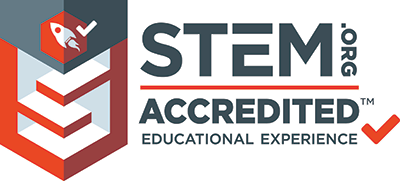How do Plants Grow & Reproduce?
Grade 6 Science Worksheets
Plant a Tree for your Tomorrow …
You must have heard that John Denver song on Arbor Day. It’s about the conservation of trees and plants. Plants are essential for our survival because they produce oxygen which we breathe and they are a source of food that we eat. They have many more uses too – as raw material for clothing and shelter, for medicinal purposes, and to bring beauty and pleasure into our lives. Plants are found almost everywhere on earth. How do plants multiply and grow? Put your knowledge to the test with this challenging 6th Grade Science Worksheet! Read each question carefully and choose the response that you feel is correct.
Schedule a Free session to clear worksheet doubts
No credit card required, no obligation to purchase.
Just schedule a FREE Sessions to meet a tutor and get help on any topic you want!
Angiosperms and Gymnosperms
Most plants grow from seeds. Depending on how seeds are formed, plants may be of two kinds:
- Angiosperms are flowering plants. They produce seeds within its fruit. The flower contains reproductive organs – stamens (male) and pistils (female).
- Gymnospermshave no flowers or fruits. Instead, they bear cones – pollen (male cones) and seed (female cones).

The process of Reproduction of such plants begins with the production ofPollen Grainsin their male reproductive organs, which Fertilizeafter reaching the Ovaries in the female reproductive organs. The Fertilization process produces new seeds.
Natural elements such as the wind or the bees transport the pollen in a process called Pollination. When pollen is carried from one flower to another, it is called Cross-Pollination. Pollination may also occur within the same flower, which is called Self-Pollination. All plants and animals undergo a lifecycle unique to them. Two important lifecycles are explained here.
eTutorWorld Understands Math Tutoring | Online Math Worksheets are Important Tools
Understanding graphs, charts, and opinion polls in a newspaper, for calculating house and car payments, and for choosing a long-distance telephone service are impossible without strong math skills …and the only way to develop strong math skills is by constant practice.
‘Practice makes a man perfect’ holds true for no other field better than for math. A middle or high school student must set aside a minimum of an hour for math every day. Other than textbooks, worksheets help you revise and understand concepts better.
Our expert tutors prepare online maths worksheets that are age and grade-appropriate. Grade-wise math worksheets for Elementary Math, Arithmetic, Pre-Algebra, Algebra, Geometry, Trigonometry, Statistics, Pre-Calculus and Calculus can be solved to improve math skills, to get ahead or to even catch up.
You may download these FREE online math worksheets in the PDF format, and then print and email us their solutions for a free evaluation and analysis by eTutorworld’smath expert tutors.
You may solve these worksheets by yourself or with your peers while studying together.
The Answer Key at the end of each worksheet allows for a self-evaluation.
Personalized Online Tutoring
eTutorWorld offers affordable one-on-one live tutoring over the web for Grades K-12, Test Prep help for Standardized tests like SCAT, CogAT, MAP, SSAT, SAT, ACT, ISEE and AP. You may schedule online tutoring lessons at your personal scheduled times, all with a Money-Back Guarantee. The first one-on-one online tutoring lesson is always FREE, no purchase obligation, no credit card required.
For answers/solutions to any question or to learn concepts, take a FREE CLASS.
No credit card required, no obligation to purchase.
Just book a free class to meet a tutor and get help on any topic you want!

The coordinated interaction of the mitotic cell cycle and cell division leads to plant development. The new seeds produced after fertilization are also dispersed by natural elements such as wind, water, or animals, to new soil areas where the process of Germination starts – the seed germinates in soil and grows roots, stems, and leaves to become a new plant. When the plant has grown to maturity it again grows either flowers or cones and the process of reproduction begins again. Doubts? A 6th-grade science tutor can help.

Check Point
- Flowering plants are known as ______.
- Cone-bearing plants are known as ______.
- The reproductive organs of a flower are the ______ and ______.
- When pollen is carried from one flower to another, it is called ______.
- The process by which a seed in soil grows roots, stems, and leaves to become a new plant is known as ______.
- What are the two main types of cells ______.
Answer Key
- Angiosperms
- Gymnosperms
- Stamen, Pistil
- Pollinationor Cross-Pollination
- Germination
- Plant cell & Animal Cell
Schedule a Free session to clear worksheet doubts
No credit card required, no obligation to purchase.
Just schedule a FREE Sessions to meet a tutor and get help on any topic you want!
Pricing for Online Tutoring
| Tutoring Package | Validity | Grade (1-12), College |
|---|---|---|
| 5 sessions | 1 Month | $139 |
| 1 session | 1 Month | $28 |
| 10 sessions | 3 months | $269 |
| 15 sessions | 3 months | $399 |
| 20 sessions | 4 months | $499 |
| 50 sessions | 6 months | $1189 |
| 100 sessions | 12 months | $2249 |
6th Grade Free Worksheets
- Inquiry process
- Nature of Science
- Scientific Inquiry
- Inquiry, Analysis and Problem Solving
- Ethical Practices
- Science and Society
- Biotic and Abiotic Factors
- Impact of Organisms
- Adaptation
- Spheres of Earth
- Natural Resources
- Environmental Issues
- Conservation of Earth
- Understanding Technology
- Abilities To Do Technological Design
- Structure of Earth
- Solar System
- Rocks and Fossils
- Earth Systems
- Plate Tectonics
- Evolution
- Magnetic Field of Earth
- Geologic Time
- Materials and Processes That Shape a Planet
- Astronomy
- Ecology
- Energy
- Kinetic and Potential Energy
- Energy Transfer
- Matter and its Structure
- States of Matter
- Physical and Chemical Changes
- Force and Motion
- Electricity and Magnetism
- Wave Interactions
- Sound
- Light
- Introduction to Life Science
- The Origin & History of Life On Earth
- Plant and Animal Cells
- Parts of a Cell
- The Cell Cycle
- How Living Organisms Get Energy
- Classification of Organisms
- How Plants Grow & Reproduce
- The Human Respiratory System
- The Human Cardiovascular System
- The Human Digestive System
- The Human Endocrine Systems
- The Human Nervous System
- The Human Muscular System
- The Human Skeletal System
Images Credit:
https://image.freepik.com/free-vector/diagram-showing-common-flower-parts-white-background_1308-43034.jpg
https://cdn.pixabay.com/photo/2017/10/04/19/48/pine-2817347_1280.jpg
IN THE NEWS

Our mission is to provide high quality online tutoring services, using state of the art Internet technology, to school students worldwide.
Online test prep and practice
SCAT
SSAT
ISEE
PSAT
SAT
ACT
AP Exam
Science Tutoring
Physics Tutoring
Chemistry Tutoring
Biology Tutoring
Math Tutoring
Pre-Algebra Tutoring
Algebra Tutoring
Pre Calculus Tutoring
Calculus Tutoring
Geometry Tutoring
Trigonometry Tutoring
Statistics Tutoring
Quick links
Free Worksheets
Fact sheet
Sales Partner Opportunities
Parents
Passive Fundraising
Virtual Fundraising
Our Expert Tutors
Safe and Secure Tutoring
Interactive Online Tutoring
After School Tutoring
Elementary School Tutoring
Middle School Tutoring
High School Tutoring
Home Work Help
Math Tutors New York City
Press
©2022 eTutorWorld Terms of use Privacy Policy Site by Little Red Bird
©2022 eTutorWorld
Terms of use
Privacy Policy
Site by Little Red Bird






